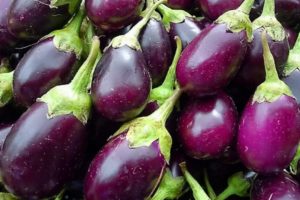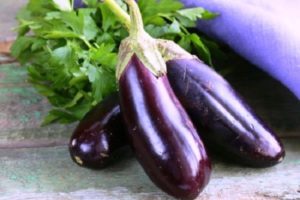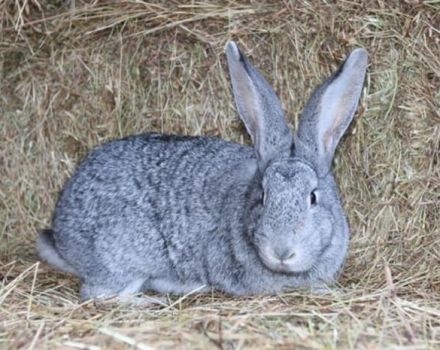How to properly plant eggplants in open ground: planting scheme, agrotechnical measures, crop rotation
The cultivation of various crops is practiced by vegetable growers annually. The question often arises of how to grow plants correctly. Planting eggplants is easy, even a beginner can handle them. It is necessary to follow agrotechnical techniques to achieve positive results.
Description and characteristics of the vegetable
India is the birthplace of culture. In those places it grows like a wild plant. In the countries of our continent, eggplant has been domesticated and planted for human consumption.
To obtain information about a plant, it is required to study its properties and characteristics. This will help grow the vegetable and prevent mistakes.
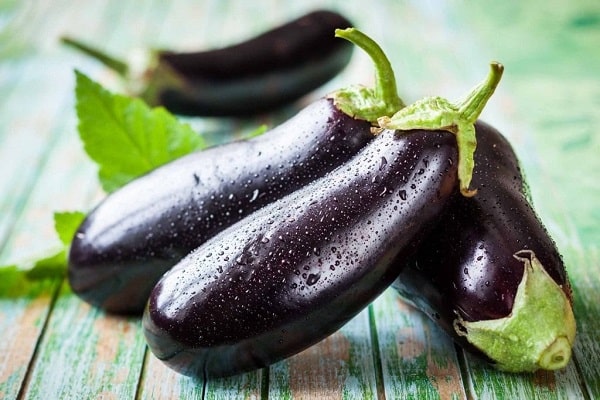
Plant:
- height: from 0.4 to 1.5 m;
- leaves: oval, rough to the touch;
- color: green or purple;
- flowers: purple, arranged in 1 or 2-7 pcs. in brushes;
- flower diameter: 2.5-5 cm;
- refers to perennials.
Vegetable:
- shape: pear-shaped, round, oblong or cylindrical;
- weight: reaches 1 kg;
- color: black, purple and all shades;
- appearance: glossy, sometimes matte;
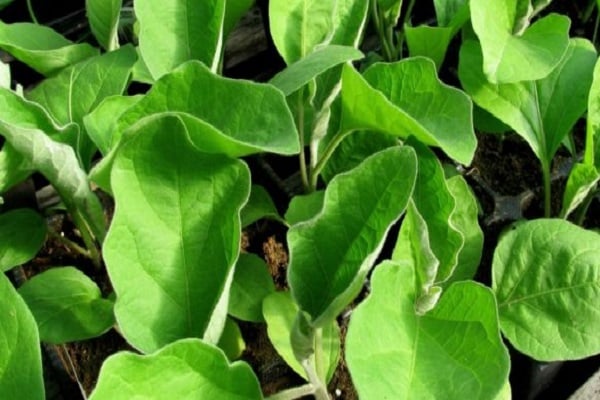
The fruits of the culture are classified as berries.
Many characteristics vary according to the variety. Therefore, it is not possible to give a clear description of eggplants.
Growing from seeds
Despite the fact that the culture is perennial, summer residents prefer to sow it directly into the ground every year.
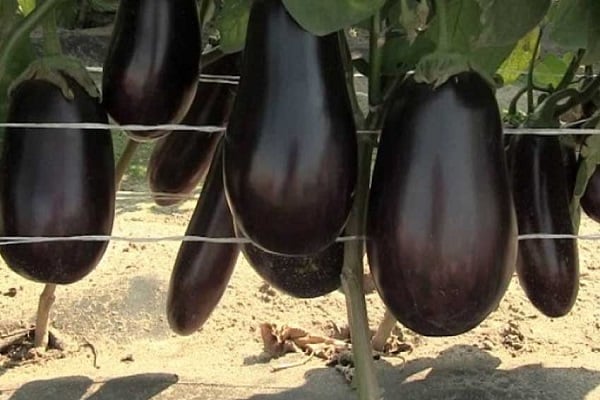
Eggplant planting material is checked for germination. Seeds (10 pcs.) Are wrapped in a piece of gauze, immersed in water, the temperature of which is not more than +27 ⁰С. After 24 hours, the water is drained, and the gauze with seeds is placed in room conditions at a stable temperature. The gauze is constantly moistened, it should not dry out. Seedlings will appear in 7-10 days. Then, by the number of germinated seeds, it is determined whether it is worth planting them or not.
If more than half hatched, then the planting material is used for sowing. If less than half, then it is worth purchasing new seeds.
The plot is dug up and beds are formed. Their height should be 30 cm, width - 1 m. The eggplant planting material is folded into a container and covered with gauze. Leave for several days for germination.
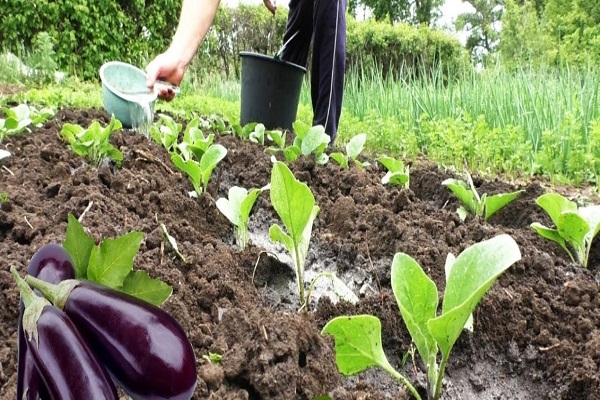
It is recommended to harden the seeds, so they can more easily tolerate a drop in temperature. The planting material is wrapped in cheesecloth, left for a day at room temperature, then put into the refrigerator for 24 hours. When the specified time has passed, they are again exposed in the room for a day.Then again put in the refrigerator for 2 days. After completing these steps, sowing is performed.
Soil temperature during planting is not less than +15 ⁰С.
Seeds are covered to a depth of 2-3 cm, watered abundantly. Night frosts have a bad effect on eggplants; it is necessary to additionally wrap the bushes. Sowing is carried out not earlier than June, possibly earlier, depending on the climate characteristics of the growing region.

Growing seedlings
It will take a little effort and time to grow a culture in a seedling way. Following simple instructions, they grow healthy seedlings. Eggplant planting material is taken no older than 3-4 years.
Initially, fertile soil is prepared in small and shallow containers. The composition of the soil for seedlings:
- 1 part of sod land;
- 1 part sand;
- 2 parts of humus.
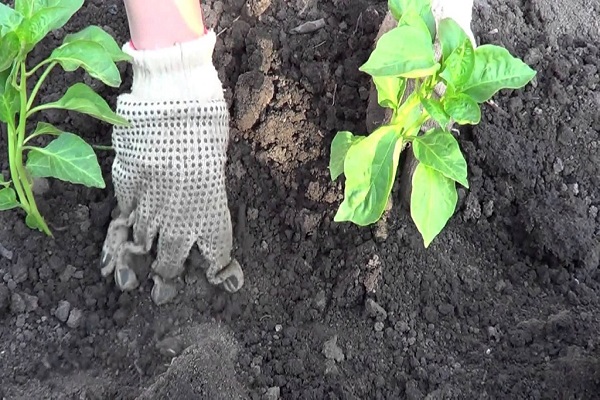
Sow to a depth of 5 mm, leaving 2 cm between the seeds.
When the sowing of the planting material is over, the earth is moistened with a spray bottle using warm water or boiling water cooled to +22 ⁰С. Tighten with polyethylene and put in a dark place until shoots appear. Ambient temperature +22 ⁰С. Seedlings will appear in 10-14 days. After the container with seedlings, they are placed on a windowsill or other well-lit place.
The summer resident determines the timing of planting independently. Seedlings are planted in open ground after passing through return frosts. The day of sowing eggplants for seedlings is determined taking into account the characteristics of the climate of the growing region.
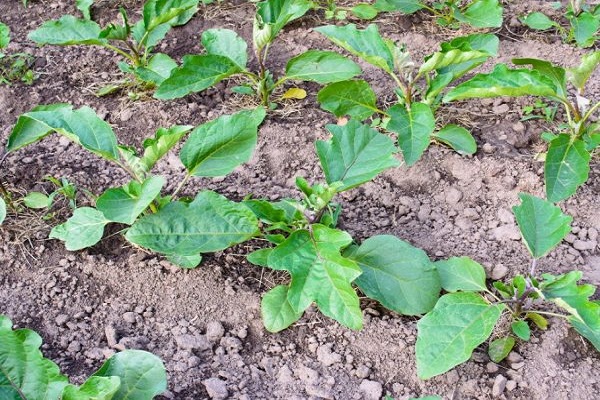
Planting eggplants in open ground
It is necessary to plant eggplants according to certain dates, having properly prepared the soil and taking into account all the other nuances of proper cultivation. Then the harvest will be good.
Landing dates
There is no specific answer to this question. It all depends on what method the eggplants are grown by, what are the features of the climate and the preferences of summer residents.

Since the summer is short, and the growing season for the culture is long (3.5-4 months), it is preferable to grow the vegetable in seedlings.
Thus, the seeds should be planted in advance, around March. The date is calculated so that by the time of planting on a permanent place, the seedlings have formed 3-5 true leaves.
It is undesirable to plant seedlings with buds in the ground. She will take the transplant very painfully. And it will lag behind in development.
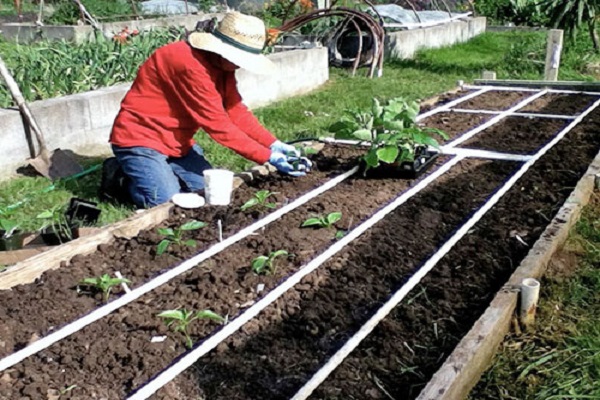
Do not rush to plant the crop early. This will not lead to anything good. Eggplants do not develop at low temperatures. It is desirable that it does not fall below +15 ⁰С, and the soil warms up to + 13 ⁰С.
If the crop is grown in a greenhouse, then the planting dates are shifted. Eggplant seedlings are planted in the middle of winter; they are planted in the greenhouse in early May. A heated greenhouse provides for planting seeds in January, and vegetable seedlings are transferred in early April.

Soil preparation
Particular attention should be paid to the correct formation of the garden; the future harvest also depends on this.
The first step is to choose a place. It is better to place the bed in a lighted area of the garden, protected from a draft.
Predecessors, after which it is undesirable to plant eggplants:
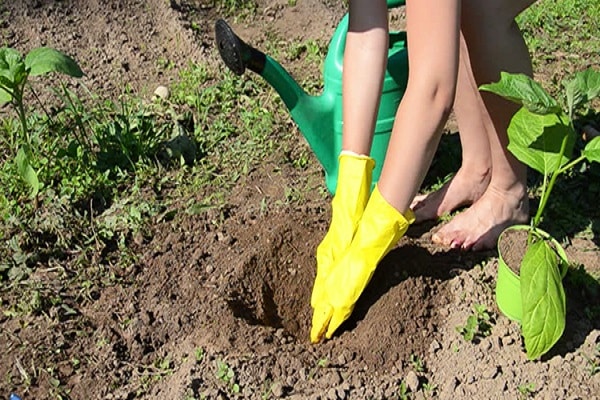
- peppers;
- tomatoes;
- potato;
- physalis.
Recommended crops, in the place of growth of which there are beds with eggplant for the next year:
- onion;
- cabbage;
- cucumbers.
The fertile soil composition is selected. It is better to add dolomite flour or lime in a small amount to acidified soil.
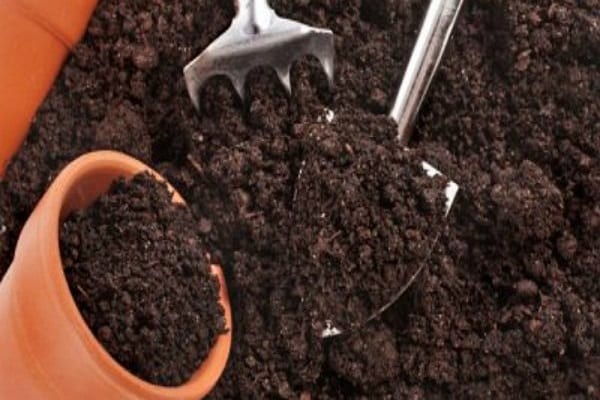
Then organic matter is added, per 1 m2 3-4 kg of rotted manure is enough. In no case should fresh manure be added.
To improve the composition of the soil, mineral fertilizers are added. 1 m2 — 30 g superphosphate and 1 tbsp. a spoonful of potassium salt.
Eggplant roots prefer soil that allows oxygen to pass through. River sand and peat are added to the beds. The earth is dug up and carefully leveled with a rake.
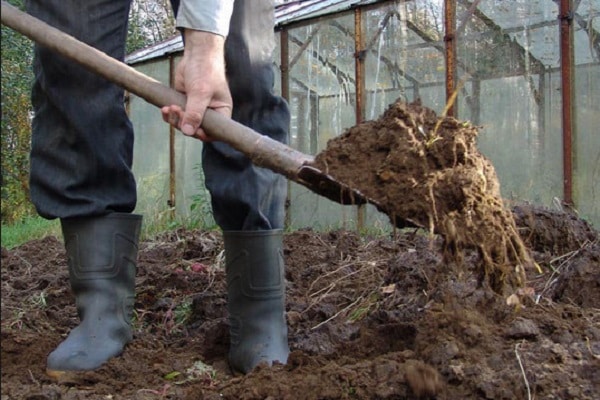
Landing scheme
To get the declared eggplant yield, you need to plant the plants correctly. The landing pattern is simple. It should take into account the characteristics of the varieties that are grown.
Recommended spacing:
- 25-30 cm in early varieties;
- 35-40 cm in medium and late varieties;
- 55-70 cm between rows;
- 15-17 cm depth of the holes.
Compliance with the planting scheme will lead to the fact that the plants will develop correctly and give the declared yield. Otherwise, favorable conditions will be created for diseases and the appearance of insect pests.
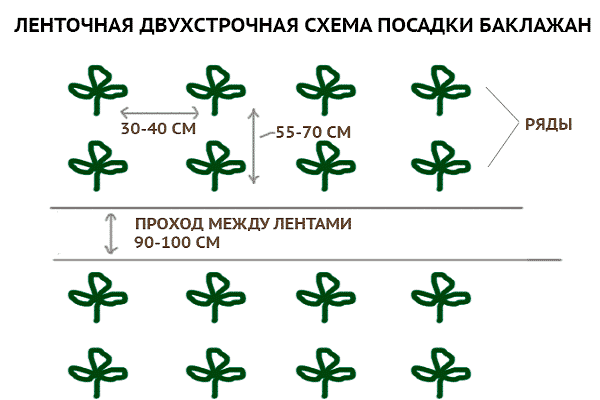
Features of growing eggplant in a greenhouse
When a summer resident decides to grow a crop in a greenhouse, you need to know about some of the features of caring for a vegetable in a greenhouse:
- Selection of varieties. Breeders are doing their best, breeding species that grow in greenhouses and yield crops. There are many such varieties, it is worth choosing the most suitable for growing conditions.
- Greenhouse construction. There should be vents for airing and creating the required temperature regime. In cold regions, it is equipped with a heating system.
- Duration of daylight hours. At least 12 hours of sunshine, with a shortage, additional lighting lamps are installed.
- Watering. It is recommended to water with warm water. Irrigate for the first time on the 5th day; it is undesirable to pour water on the leaves.
- Soil composition. The soil should be loose and fertile.
- Care. Removal of flowers and feeding is necessary.
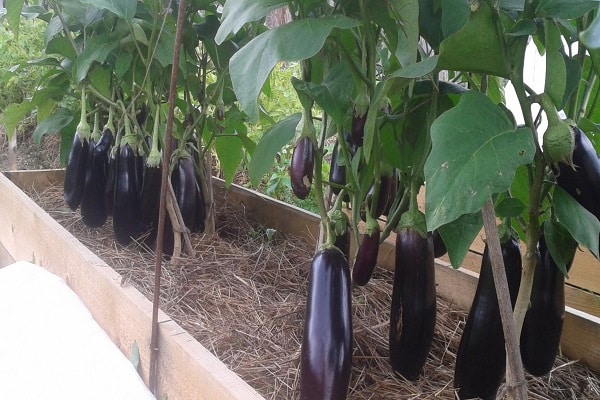
Experienced growers advise beginners to grow crops in a greenhouse. It is easier to protect plants from wind and temperature changes in it.
Plant care rules
The final result depends on how well the eggplants are cared for. No matter how well the variety and place for planting are selected, without proper care it will not be possible to achieve a positive result.

Watering and loosening
The culture does not tolerate lack and excess of moisture. Moderation is required while watering. Water consumption rates per plant depend on the size of the seedling itself. The larger it is, the more moisture is required for normal development.
Water temperature for irrigation is not lower than +22 ⁰С. Lower temperatures inhibit root growth and all plant development.
Water is poured directly under the root, excluding the ingress of moisture on the foliage. This is done 2 times a week. When the plant blooms, water it 2-3 times for 7 days. When it is not possible to water often, they do it abundantly.
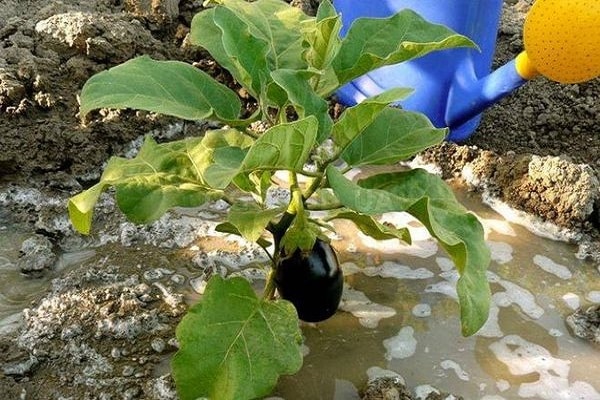
Loosening is necessary for eggplants to obtain oxygen by the root system. Another reason for systematic loosening is weed control. They cause a lot of problems for eggplants, because they are carriers of diseases and insect pests. They loosen, retreating from the roots of the eggplant by 10 cm.The first loosening to a depth of 10 cm, then 12 cm.
If you spud the plants at least 4 times during the growing season, this stimulates the formation of additional lateral roots, which contributes to the rapid growth and development of ovaries.
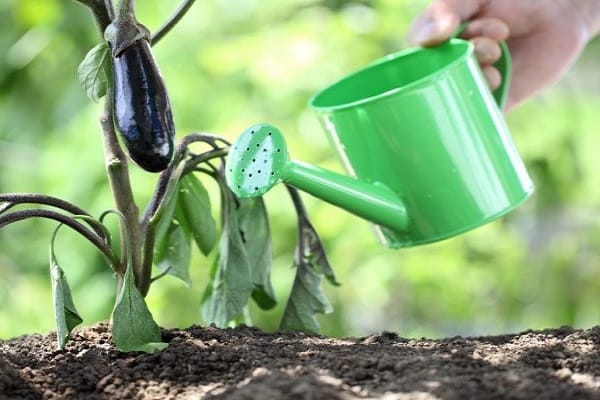
Formation
An important role is played by the correct formation of eggplant bushes. Not all varieties require this procedure. A novice summer resident should be attentive to this point.
Form those plants that have reached 25-30 cm in height. Remove all stepsons growing below the first bud. The first ovary is also pinched off.
To do it or not is a personal matter for every grower. Experienced summer residents say that the correct formation increases the yield from one plant several times.
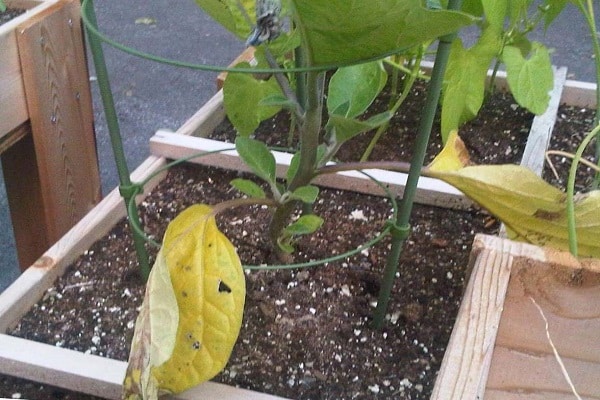
Top dressing
An important point of plant care is the correct timely feeding. It helps eggplants to form ovaries and produce the declared yield. Another reason to apply fertilizer on time is disease prevention.
The number of dressings per season is at least 3:
- 20 days after transferring to the garden.
- A month after the 1st feeding.
- When the plants begin to bear fruit.
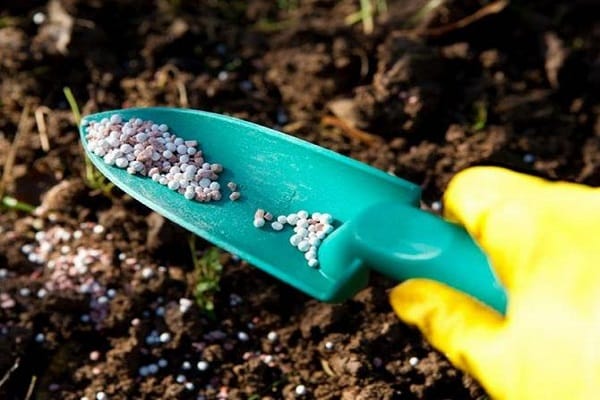
It is recommended to alternate fertilizers. Use:
- organic matter: manure, compost, chicken droppings;
- mineral supplements: phosphorus, nitrogen, potassium, iron, boron and manganese.
From folk remedies, summer residents recommend using the following dressings:
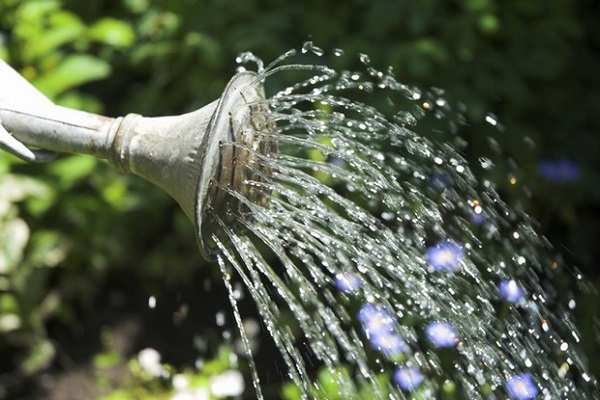
- Wood ash. For a bucket of water 1 glass of ash. Each plant is watered at the root.
- Yeast. 5 l of water and 200 g of compressed yeast. Let it brew for 24 hours at room temperature. Then the mixture is diluted at the rate of 1 part to 10 parts of water, poured strictly under the root.
- Dandelion. A glass of flowers is poured with 2 liters of boiling water. Insist for 5 hours. Then add another 8 liters of water, used for irrigation.
- Pharmaceutical camomile. 1 glass of plant flowers per 1 liter of boiling water. Insist for 24 hours, then add another 9 liters of water and watered at the root.
Feeding methods are different, their application depends on the personal preferences of the summer resident.
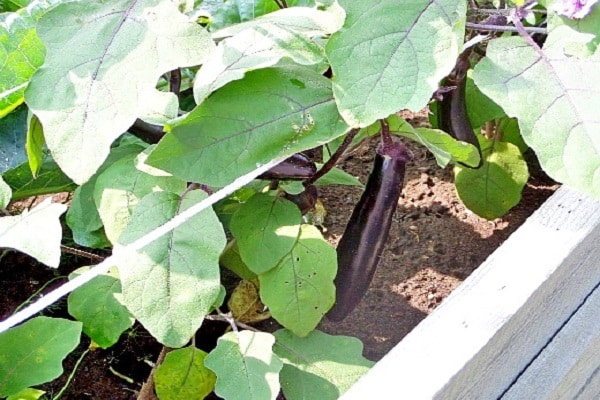
Diseases and pests
The plant suffers from the attacks of the Colorado potato beetle. This insect is capable of destroying the entire plant in a matter of days. In addition to him, eggplants are overcome by:
- spider mite;
- aphid;
- whitefly;
- bear;
- slugs.
Treatment with insecticides will help get rid of them. The aisles are sprinkled with wood ash or slaked lime.
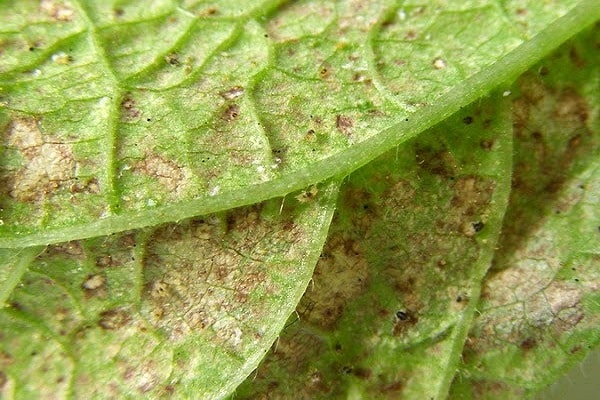
To avoid development diseases on eggplant, agrotechnical requirements should be observed. Correctly prepare the bed, observe the crop rotation and planting scheme.
Eggplants are subject to the following diseases:
- root rot;
- root rot;
- fusarium;
- verticellosis;
- late blight;
- mosaic;
- stolbur.
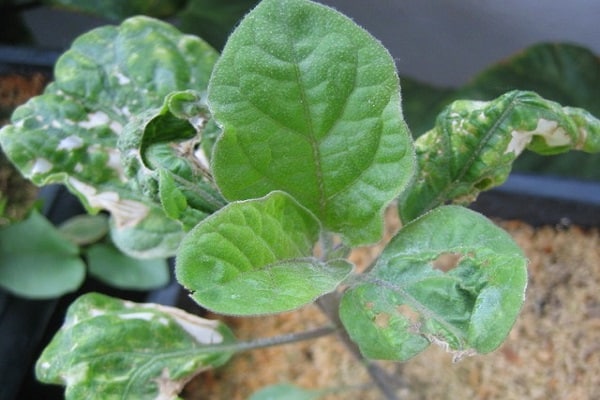
Competent processing of eggplants with special solutions will not allow the disease to develop and switch to healthy specimens. There are several ways to fight, the summer resident is free to choose an effective method himself:
- Biochemical preparations. They do not harm either humans or animals, focusing on the destruction of the pest.
- Chemicals. They fight diseases quickly, but settle in the fruits of plants.
- Folk remedies. They require repeated processing, they do not last long.
It is best, of course, to do without the use of chemistry, but in some cases its use is necessary, since other means simply cannot cope.
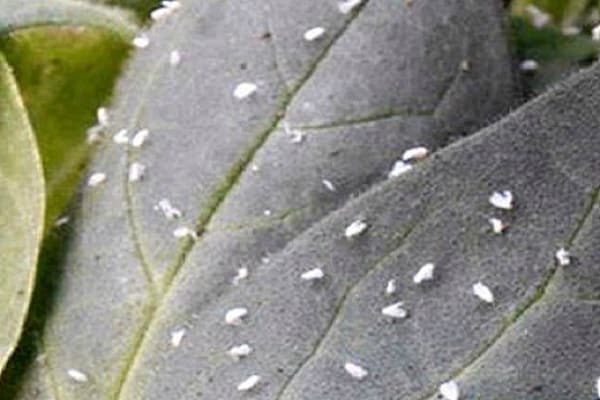
Harvesting and storage
There is no clearly defined period, since summer residents grow different types of eggplant... It is worth focusing on the variety of culture.
Harvesting from different varieties:
- early 90-110 days;
- average 115-130 days;
- late 130-140 days.
The timing may vary from how the agricultural technology was carried out, when the eggplants were planted and from the climatic features of the region.

The peculiarity of the culture is that the degree of maturity of eggplants cannot be correlated with color, since they become purple almost immediately. In addition to the growing season, experienced summer residents are advised to focus on the length of the vegetable, by which to judge the maturity of the eggplant.
If you press on the fruit and the structure is quickly restored, the vegetable is ripe. Otherwise, leave the eggplant on the bush.
They are removed from the bushes with a pruner, the remaining unripe fruits are left on the plant. To complete the ripening process, they are transferred to the greenhouse along with the roots.
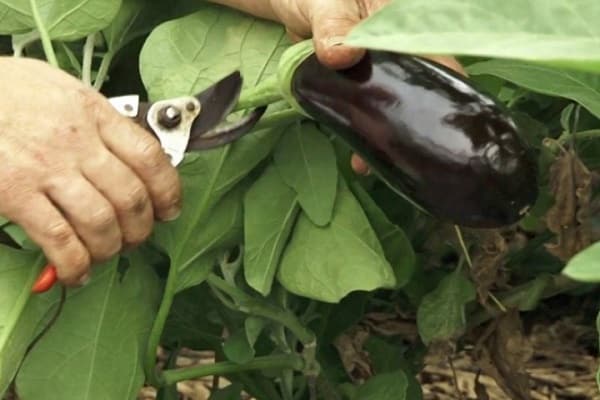
For those who decide to save part of the eggplant harvest until winter, there is an opportunity to do this. Large and healthy specimens are selected. Put it in a box and sprinkle it with straw. Store in a cool, dry place with constant temperature.
There is another way to preserve vegetables for a longer period - they are dried. Eggplants are sorted out and cut into slices no more than 2 cm thick. Then they are threaded and hung in a well-ventilated room.
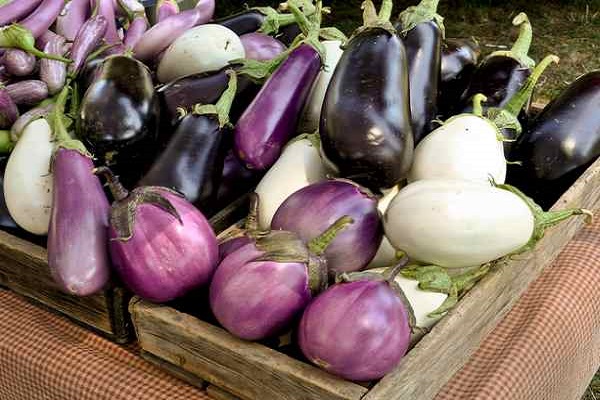
What to plant next year
Summer residents know very well that in the place where nightshades grew last year, it is not recommended to plant eggplants, as they can become infected with diseases common to the family.
Observing the alternation of crops, vegetable growers achieve a high yield.Plants are less likely to get sick and grow and develop faster.
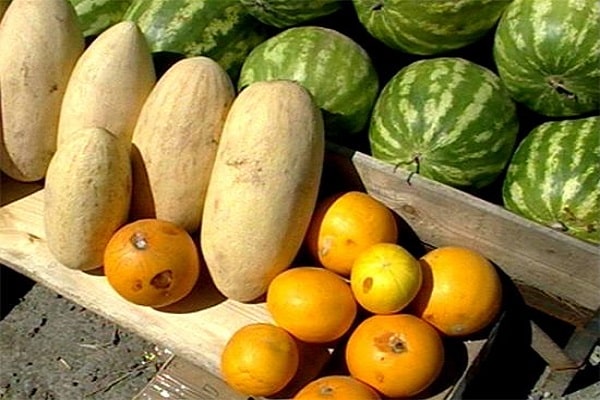
The next year, after eggplant, cabbage, cucumbers, green manure, melons and onions are sown. Planting beets is acceptable.
The fears that beginners have about the difficulty of growing are groundless, eggplants grow and develop without special care. It is enough to follow the agrotechnical techniques familiar to the vegetable grower, and the plant will delight with the harvest.

